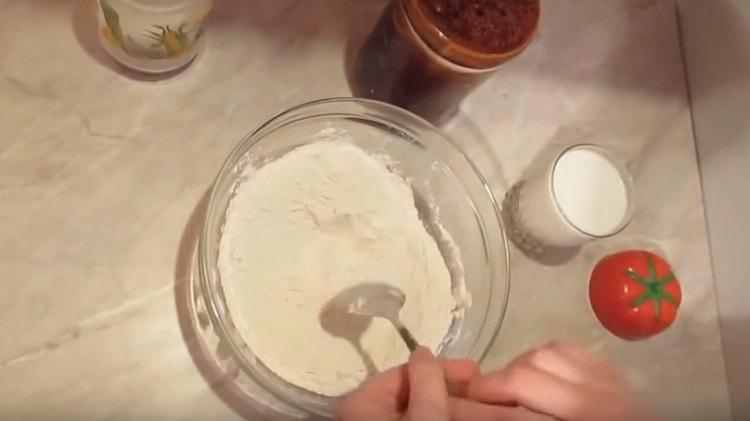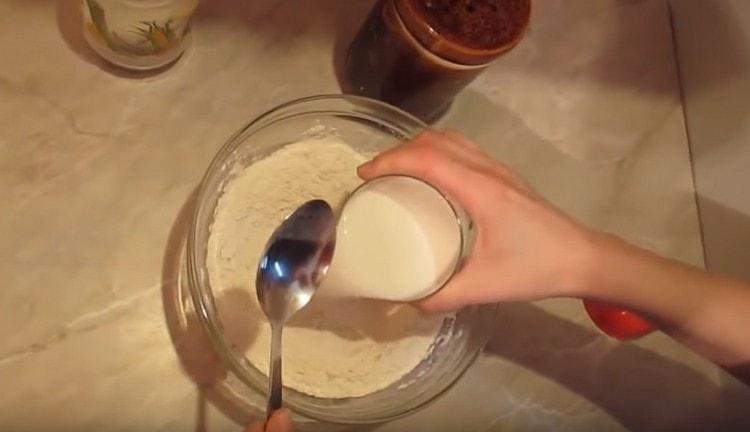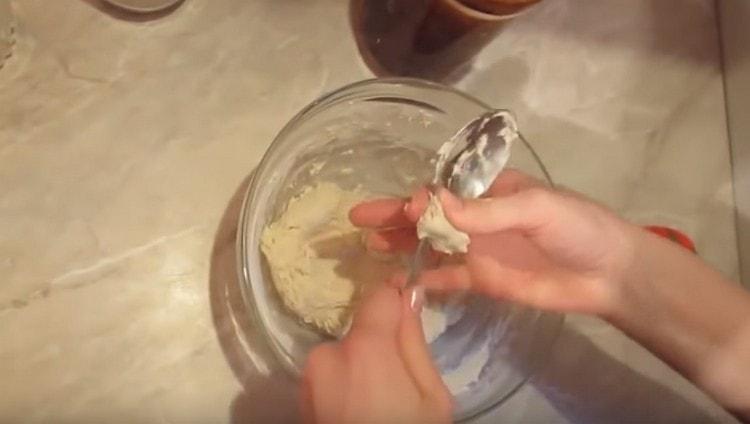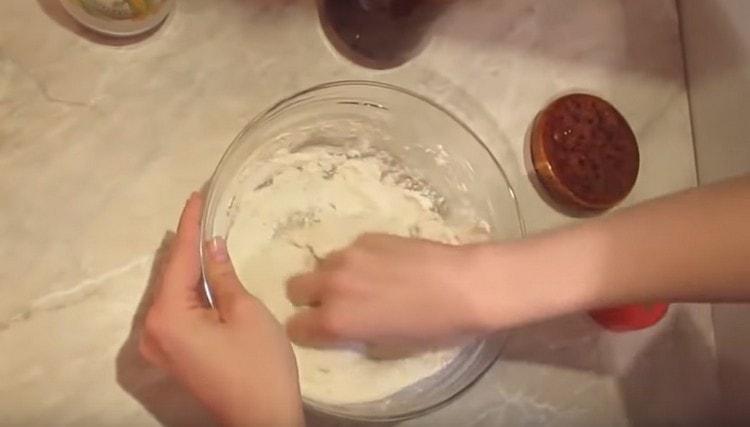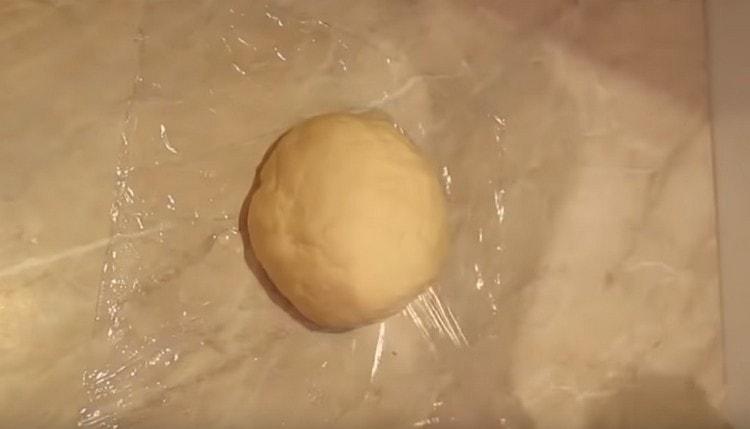Kitchen appliances and utensils:
- 2 cups;
- deep container for kneading dough;
- rug or board for kneading dough;
- tablespoon;
- cling film.
Ingredients
| Product | amount |
| Milk 2.6% | 1 stack |
| Flour | 3 stack |
| Salt | 0.5 tsp |
Step cooking
- Pour 2 cups flour into the container for the dough, add 0.5 tsp. salt and mix the bulk ingredients with a tablespoon.

- Pour 1 cup of cold or room temperature milk into the flour mixture and mix thoroughly with a tablespoon until a homogeneous sticky mass is obtained.

- Remove the adhering pieces with your fingers from the surface of the spoon and send them to the main part of the dough.

- Pour about 0.5 cups of flour and begin to knead the dough thoroughly with your hands. Gradually add the remaining flour, while thoroughly mixing. It is worth noting to overdo it with flour, otherwise the dough will become “rubber” and it will be difficult to work with it.

- When the mass under your hands becomes soft and elastic and stops sticking to your hands, put the remaining flour to the side and form a kolobok from the dough.

- Cut off a piece from the roll with cling film and wrap the dough in it so that it is completely closed and not weathered. After our bun is well wrapped, leave the dough to rest for 30 minutes, after which we roll it into a layer of the desired thickness, cut out circles and start sculpting dumplings or dumplings.

This test option is ideal for lean cooking, because in this case eggs are not used as ingredients. In addition, it can be prepared in advance and left in the refrigerator wrapped in film for the night, so that in the morning you can calmly start cooking dumplings or dumplings.
Video recipe
Many are frightened by the thought that as a result of the labors, the dough will be clogged due to the large amount of flour. Therefore, it is best to see what the result of kneading should be, and compare it with its mass in terms of elasticity and softness. To do this, we suggest watching a video recipe.

